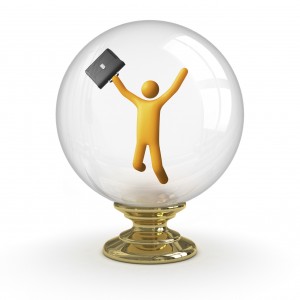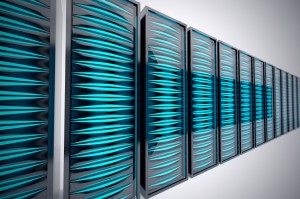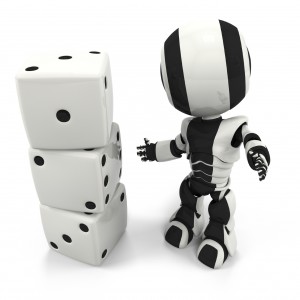My Microbiome Made Me Do It

Her microbiome made her do it.
My sister craves chocolate. Is it her or her microbiome?
Your microbiome – the 100 trillion microscopic organs living in your body – may weigh up to three pounds (ca. 1,400 grams). In other words, it may be about as big as your brain. It may affect a wide range of diseases including obesity, muscular dystrophy, diabetes, multiple sclerosis, and chocolate abuse
Your microbiome affects disease, but can it affect your behavior? Can it force my sister to eat chocolate? Let’s start with the case of the cat and the mouse.
Toxoplasma gondii is a single-celled parasite that cycles between cat and mice. To complete its life cycle, it needs to pass from cat to mouse and back to a cat again. Toxoplasma lives in the cat’s gut so it’s fairly easy to get from the cat to the mouse – it travels in cat poop.
But how does it get back to the cat? Mice are, of course, deathly afraid of cats and scrupulously avoid them. But not if they’ve been infected with toxoplasma. Then they start wandering around in the open and may even be attracted to the smell of cats. They’re much more likely to be eaten by a cat. Joanne Webster, who studies these things at Imperial College, calls it “fatal feline attraction”.
How does it work? It’s complicated. Somehow the toxoplasma generates dopamine that interferes with the mouse’s brain messaging system. The interference changes the mouse’s behavior.
Remember dopamine? It’s a neurotransmitter that (among many other things) works with the reward system in the brain. Dopamine helps reward us – mice and humans — for good behavior. When we do something well, our systems release dopamine and we feel a sense of pleasure and reward. Problems with the dopamine system can affect a range of behaviors, including ADHD and schizophrenia.
So, is toxoplasma related to schizophrenia? Jaroslav Flegr thinks so. Flegr found that schizophrenics were three to four times more likely to be inflected with toxoplasma than non-schizophrenics. Similarly, E, Fuller Torrey found that women infected with the parasite “were more likely to give birth to schizophrenics to-be.”
Flegr also studied toxoplasma and road accidents. “Both drivers and pedestrians who had been in accidents were almost three times more likely to be infected than comparable individuals who had not been.” They also had poorer reaction times and shorter attention spans. All of this could induce riskier behavior – just like in mice.
What does all this have to do with my sister? Toxoplasma is just one example of the microbes living in the human body. As Carl Zimmer points out, it’s possible that other microbes are influencing our behavior in myriad ways, including food cravings. As Zimmer puts it, “Maybe the microbiome is our puppet master.”
Did you ever wonder why humans are called “social animals”? Perhaps it’s because we can be more successful by collaborating and building societies. Or perhaps it’s because our microbes want to travel from one human to another. It’s much easier on our microbes if we’re clustered together.
And food cravings? Zimmer points out that different microbes like different kinds of food. Perhaps their desires drive our cravings. Zimmer writes that, “Many people crave chocolate fiercely, but it isn’t an essential nutrient. … Perhaps … certain kinds of microbes that thrive on chocolate are coaxing us to feed them.”
If true, does this mean that my sister is not responsible for her chocolate craving? Is she just an innocent bystander, manipulated by her microbial puppet master? It’s an intriguing question that I’ll save for a future article. In the meantime, if you get in trouble with the law, I’d suggest that you say, “My microbiome made me do it.”
(For a related article on zombie spiders, click here).
Success and Serendipity

Anything could happen.
Carl von Clausewitz, the renowned German military strategist, wrote that “No campaign plan survives first contact with the enemy.” It’s good to plan, organize, and coordinate but remember that the enemy will always do something unexpected. Resilience – the ability to react to new realities and change direction as needed – is probably the single most important variable in battlefield success.
Clausewitz, of course, was focused on war planning. At the risk of being presumptuous, I’d like to paraphrase the thought: No business plan survives first contact with reality. As in warfare, it’s good to plan ahead. But don’t stick to the plan blindly. Be observant and pragmatic. As you learn more about reality, adjust the plan accordingly and do it quickly.
We all like to make predictions, of course, but reality intervenes. Odd things happen. Weird coincidences occur. As we learned a few weeks ago, we all confabulate. We make up stories to explain what happened in the past. By understanding the past, we should be able to control the future.
Unfortunately, the stories we confabulate about the past are never completely true. Too many things happen serendipitously. We may think that X caused Y but reality is much more complicated and counter-intuitive. Another German, Georg W.F. Hegel probably said it best: “History teaches us nothing except that it teaches us nothing.”
If we can’t predict the future, why bother to write a business plan at all? Because it’s useful to lay out all the variables, understand how they inter-relate, and tell a story about the future. Once you have a story, you can adjust it. You can tell how closely your thinking relates to reality and change your plans accordingly. It’s like tailoring a new set of clothes. Following a pattern will get you close to a good fit. But you’ll need several fittings – a nip here, a tuck there – to make the ensemble fit perfectly.
This approach to planning also emphasizes the importance of serendipity. My favorite definition of serendipity is “…an aptitude for making desirable discoveries by accident.” If you could predict the future accurately, you wouldn’t need serendipity – you would simply follow the plan. Since you can’t predict the future, you need to promote serendipity as part of your plan.
How do you promote serendipity? The simple answer is that you do new things. Talk to different people. Take a different route to work. Study a new language. Travel to a new country. Take a course in a new discipline. Don’t ever assume that you know what you’re doing. Remember what Louis Pasteur said, “Chance favors the prepared mind.” Never let an accident go to waste.
Immoral Afternoons

Good advice.
I used to work for a CEO who had one hard and fast rule when it came to making decisions: he wouldn’t make any important decisions after 2:00 in the afternoon. I used to think it was an odd and unnecessary rule … but then I started counting calories.
My little food diary app keeps track of what I eat and lets me know if I’m getting too much of this or not enough of that. It’s interesting to keep track of what I consume. But what really surprised me was not what I eat so much as when I eat. I eat a well-balanced, healthy diet throughout the day. Then, around 7:00 at night, all hell breaks loose. On a typical day, I eat roughly 50% of my calories between 7:00 and 10:00 at night. If I went to bed at 7:00 pm, I’d be much healthier.
My experience reminded me of Daniel Kahneman’s story about the Israeli parole board. The default decision in any such hearing is to deny parole. To permit parole, the board has to find information that would point toward a positive outcome. In other words, it’s easy to deny parole. It takes more work – sometimes quite a bit more work – to grant parole.
Kahneman reports on a study that tracked parole decisions by time of day. Prisoners whose cases were considered just after lunch were more likely to win parole than those whose cases were considered before lunch. It all has to do with energy. Our brains consume huge amounts of energy. Making difficult decisions requires even more energy. Just before lunch, members of the parole board don’t have much energy. Just after lunch they do. So before lunch, they’re more likely to make the default decision. After lunch, they’re more capable of making the more laborious decision.
Energy doesn’t just affect decision making. It also affects will power (which, of course, is a form of decision making). When our bodies have sufficient stores of energy, we also have more will power. Why do I eat so many calories after 7:00 pm? Perhaps because my energy stores are at a low and, therefore, my will power is also at a low. It might be smarter to spread my calories more evenly throughout the day so my energy – and will power – don’t ebb.
Energy also affects ethics. A research study published in last month’s edition of Psychological Science is titled, “The Morning Morality Effect”. The researchers, Maryam Kouchaki and Isaac Smith, ran four experiments and found that people “… engaged in less unethical behavior … on tasks performed in the morning than in the same tasks performed in the afternoon.” In fact, “people were 20% to 50% more likely to lie, cheat, or otherwise be dishonest in the afternoon than in the morning.”
What’s the common denominator here? Energy depletion. As the day wears on and our energy levels drop, we’re less able to make complicated decisions or resist temptation. The parole board example suggests that we can combat this to some degree simply by eating. I wonder if taking a nap might also help – though I haven’t seen any research evidence of this.
Bottom line: my old boss was right. Make the tough decisions in the morning. Take it easy in the afternoon.
Products As A Service – The Circular Economy

Why buy when you can rent?
I’ve bought several products recently without really buying them. Rather than buying the product, I bought the benefits. The manufacturer still owns the product. In the future, the manufacturer may take the product back, replace it with a newer, better product, and recycle the original product.
I get two sets of benefits. First, I get the benefit of whatever the product offers. Second, I get the benefit of staying current with the latest technology. (This is sometimes known as future-proofing). The manufacturer also gets two benefits. They get a steady income stream as I rent the first product. And, when they upgrade me, the manufacturer can refurbish my original product and resell it.
I bought my new smart phone this way last December. I pay a monthly fee to use the hardware. The fee also gives me the right to upgrade to a new phone in 12 months, with no additional charge. I simply give my current phone back to the manufacturer and walk out with the new phone. The manufacturer takes my old phone back, refurbishes it, and “sells” it to someone else.
In the software world, this is known as an “as-a-service” offering. Workday, for instance, offers software-as-a-service for human resources applications. Companies don’t buy the software. Rather they buy access to the software as it runs on the cloud. Behind the scenes, Workday can upgrade to new releases or new technology transparently.
Amazon similarly offers platform-as-a-service through its Amazon Web Services arm. Amazon has built a huge array of computers; anyone can access it by the hour, or day, or week, or year. You just pay for what you use. I now have the power of a supercomputer at my fingertips (for a brief period).
Outside the software world, this concept is more generally known as the circular economy. The idea is that a manufacturer sells a product and expects that it will circle back at some time in the future. The manufacturer can capitalize on the remaining economic value within the product by refurbishing, reselling, or recycling it.
Phillips Electronics seems to be one of the leading practitioners of the circular art. In an interview with McKinsey, the Phillips CEO, Frans van Houten discusses some of their projects. For instance, Phillips has a contract with Buenos Aires to replace 125,00 streetlights with advanced LED devices. Buenos Aires is buying the light, not the devices. Phillips can upgrade the devices in the future to capitalize on energy-saving enhancements. Conceivably, Phillips could sell the current LED devices to other cities.
As van Houten point out, the circular economy also changes the way product designers think. They’re no longer designing a product that they’ll never see again. In all likelihood, the product will circle back to them. So, they design not only for function, but also for longevity and reuse. That can mean better margins for the manufacturer as well as lower costs for the customer.
Best of all, perhaps, the circular economy also means that fewer products wind up in landfills. Rather than designing for obsolescence, circular companies are designing products that will live multiple lives. That can only be good for us and the world we live in.
Time, Cost, and Quality. Pick Any Two.

Pick any two.
We just bought some new drapes for our apartment in New York and asked a seamstress to tailor them to the space. She did a great job at a very reasonable price. But it took weeks to get them.
Our experience with the drapes reminded me of a rule-of-thumb that I learned long ago and has helped me through many a project since then. Here’s how I heard it:
Time, cost, and quality – pick any two. You can never have all three.
You can look at three parameters for any project, but you can only optimize two. For instance, you can make decisions about time – how long the project should take. You might specify that you want it done quickly or you might allow for a more leisurely pace. Similarly, you can specify that you want very high quality or that you’re willing to accept a few defects. For cost, you might choose to pay a very pretty penny to get the job completed. Or you might decide that the project has to fit within a rather tight budget.
Let’s look at the combinations.
Time and cost – you optimize for time and cost by deciding that you want the job done quickly and at low cost. That’s fine but quality is almost sure to suffer.
Quality and time – you want a high quality project done quickly. Great. But you’re probably going to pay very high fees to get it done. You can get quality work done quickly, but it will cost you.
Quality and cost – you want a high quality project done at low cost. OK, but it’s going to take a long time. (Our drapery example fits here).
The bottom line is that you can improve any two of the parameters but it will always create pain on the third parameter. I’ve thought about this on many, many projects throughout my career. It always works. Always.
The trick is to be very clear about what you want. In the case of the draperies, we weren’t in a hurry, so it made sense to optimize on quality and cost. In your projects, you’ll want to think through the parameters and decide which ones are the most important for that particular project. You’ll probably find that the parameters will change from project to project. That’s fine. Just be sure that everybody on the project understands which parameters you want to optimize. Otherwise, you won’t get two out of three. You’ll get none out of three.